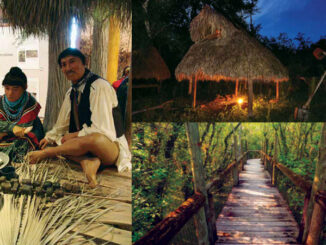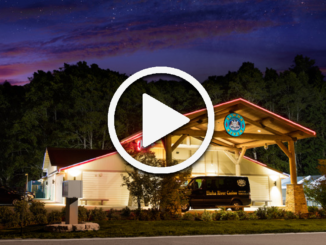Whether you’re on an HR team, senior leadership team or Tribal council, it’s important to have a collective process to start the new year.
Raving partner Paula Allen, Tribal citizen of the Jamestown S’Klallam Tribe in Sequim, Wash., has worked for her Tribal property, 7 Cedars, for the last 20 years as the Retail Manager. She added Guest Service Manager to her résumé over the last eight years.
“It’s important to get in alignment with what our goals are, getting approval from the Tribal Council to move forward with those goals, having everybody on your team understand what those goals are, and then taking a recap at the end of the year,” Allen said. “That helps energize the entire team.”
Breaking Down Barriers
Breaking barriers is important because Allen said what she hears over and over again when it comes to Tribal properties is the amount of involvement between Tribal councils and what they will or won’t approve.
“How do we make sure we are all in alignment and acclimate the council in a way they understand the obligations to the executive side as well,” Allen said.
Creating that solid system will help not just the entities, but the entire Tribe get in alignment with those goals.
How the Tribe Accomplished Self-Sufficiency
The Jamestown S’Klallam Tribe went from a zero-based revenue Tribe to self-sufficiency. It was done through a systematic process of communication between the executive team and the council that is then passed down to everyone in the organization. Allen said she’s a big fan of hosting meetings off the property for the executive teams of all Tribal entities from casino gaming, healthcare, and others. It’s easy to get pulled away from an important meeting or be completely immersed in the details by staying on property, she adds.
“Getting off property I have found has been extremely beneficial as far as creating that connectedness with the team,” Allen said.
Allen was part of a joint Tribal council and executive team retreat. She attended to present a leadership development program to the executive team and participated in the entire weekend, which she called magical.
“Everybody that participates in that weekend comes away so energized, refreshed and ready to go and have a sense of community that they didn’t have before,” Allen said.
Allen said it’s vital to be strategic about the entire process. It must be a party that everyone wants to participate in because the teams have been involved in the process since the start of the year, she said.
How to Set Up a Retreat
Allen said the pre-retreat is important to provide an organized structure. The one she attended was held at a Washington lodge. It’s important to set the date and location about nine months beforehand. It’s best to keep the size limited to about 20 people or fewer.
About two months prior, there’s a discussion of themes, topics, and issues that the council and executive committee wanted to address. Any facilitators for the event are also selected about two months prior. About a month before, everyone is provided a summary and work plan from departments so everyone who’s invited gets a workbook on what the weekend entails.
“That was so much information for me,” Allen said. “It was fun to go through and see what the council was able to accomplish and what was on the docket for the next year.”
The retreat started with a big dinner the night before and the following day was all about business and presentations, Allen said.
“The fun thing is all of the work has been done,” Allen said. “In preparation for the weekend, they had been doing all of the work – filling out the forms and gathering the information and distributing it. Now, we’re just talking about it and moving onto the next year.”
Allen called it a fun and exciting interaction with videos on what was accomplished the year before and there was also great food at the retreat.
“It was just a wonderful setting,” Allen said. “It made you feel like you were on vacation with friends with a large extended family. It was a much different environment than being at our casino in the boardroom or on the resort side. Being off property like that and breaking bread with the family is much different than that type of setting.”
Allen said it felt like a celebration of what was accomplished and made her excited about what was to come during the year and how it would be accomplished.
Allen said the setting allows executives to ask the council pertinent questions that front-line team members have – questions that are given to them three weeks prior to the retreat.
During the weekend, the council goes over its goals and the Tribe’s priorities for the year, delving into staffing, funding requirements and resources needed to accomplish that, Allen said.
“That was amazing to be a part of,” Allen said. “I loved listening in on that entire process of how the Tribe was moving forward and the resources that they needed to be able to do that. It energized my leadership development and how important that is to this system. We have to make sure on the resort end and throughout our entities that we have developed leaders. Otherwise, we’re not able to accomplish these goals that the Tribe is setting forth.”
Afterwards, Allen said Tribal leaders found it important to communicate to the Tribe what was accomplished at the retreat in the form of a yearly report. It described what was accomplished the year before and provides clarity on what’s on the docket over the next year.
Paula Allen is a Raving Partner with expertise in Leadership and Tribal Member Development. Paula has extensive experience working at all organizational levels creating, promoting, and delivering training solutions designed to support the organization’s goals, business plan, and mission. If you’re interested in learning more about creating your own retreat or other solutions for your leadership team, contact Raving to learn more.




